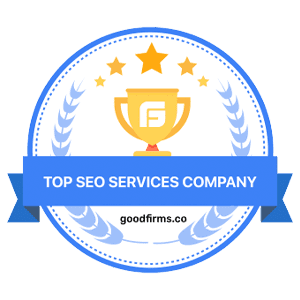In today’s fiercely competitive digital landscape, understanding and optimizing conversion rates are paramount for businesses aiming to thrive online. Conversion rate optimization (CRO) is not merely a buzzword but a strategic imperative that can significantly impact a company’s bottom line. By systematically analyzing user behavior, identifying pain points, and refining conversion funnels, businesses can unlock untapped potential and maximize their return on investment (ROI). This article delves into the intricacies of conversion rate optimization, exploring key concepts, challenges, and strategies to help businesses elevate their digital performance and achieve sustainable growth.
What is Conversion?
In the realm of marketing, a conversion denotes the sought-after action executed by a user upon visiting a website or landing page. This action could vary depending on the specific goals of the business, but common examples include making a purchase, signing up for a newsletter, filling out a contact form, or downloading a resource. Essentially, it’s any action that moves a visitor further along the sales funnel or accomplishes a predefined objective. For instance, if a user visits an e-commerce website and completes a purchase, that transaction represents a conversion. Similarly, if a visitor to a blog signs up for a weekly newsletter, that action is also considered a conversion.
There are various types of conversions, each corresponding to different goals or objectives that a business may have. For example, a macro conversion typically refers to a significant action such as completing a purchase, while a micro conversion could be something like adding an item to a shopping cart or watching a product demo. Other types of conversions may include form submissions, account registrations, social media engagements (likes, shares, follows), or even simply spending a certain amount of time on a website.
Factors Influencing Conversion
Several factors can influence the conversion process, ranging from the design and usability of a website to the clarity of its messaging and the effectiveness of its call-to-action (CTA) buttons. User experience (UX) plays a crucial role, as visitors are more likely to convert if they find a website intuitive, visually appealing, and easy to navigate. Additionally, factors such as page load speed, mobile responsiveness, and security can impact user trust and ultimately affect conversion rates.
Effective website design, compelling content, and persuasive messaging are also essential for encouraging conversions. Clear and concise CTAs guide users toward the desired action, while persuasive copywriting addresses their pain points and highlights the benefits of taking that action. Furthermore, factors like social proof (e.g., customer reviews, testimonials) and trust signals (e.g., security badges, industry certifications) can help alleviate user concerns and build credibility, increasing the likelihood of conversion.
Understanding Conversion Rate

The conversion rate stands as a pivotal performance indicator within marketing, gauging the proportion of website visitors who fulfill a specific desired action. It provides insights into the effectiveness of a website or marketing campaign in driving conversions and achieving business objectives. Conversion rate is calculated by dividing the number of conversions by the total number of visitors and multiplying by 100 to get a percentage.
A robust conversion rate signifies the efficacy of a website or campaign in convincing visitors to engage actively, reflecting the persuasive power of its content and design. Conversely, a lower conversion rate may serve as a signal for potential areas of refinement or optimization, highlighting opportunities for enhancing user experience and refining marketing strategies. Monitoring conversion rate trends over time and comparing them to industry benchmarks can help companies assess performance and identify opportunities for optimization.
Importance of Conversion Rate Optimization (CRO)
Conversion Rate Optimization (CRO) is the process of improving conversion rates by optimizing various elements of a website or marketing campaign. CRO aims to maximize the effectiveness of existing traffic and increase the likelihood of conversions without necessarily increasing the volume of visitors. By analyzing user behavior, conducting A/B testing, and making data-driven optimizations, businesses can enhance the user experience, streamline the conversion process, and ultimately drive more conversions. CRO is essential for maximizing the return on investment (ROI) from marketing efforts and achieving long-term business growth.
Measuring Conversion Rate
Accurately measuring conversion rates is crucial for evaluating the effectiveness of marketing efforts and identifying areas for improvement. Various tools and methods are available for tracking conversion rates, including web analytics platforms like Google Analytics, which provide insights into user behavior and conversion events. Additionally, specialized tools such as heatmaps, session recordings, and conversion tracking software offer valuable data on user interactions and conversion paths.
Tracking and analyzing conversion rate data is essential for understanding user behavior, identifying trends, and optimizing marketing campaigns. By monitoring conversion rates over time and across different channels, businesses can gain insights into which strategies are most effective in driving conversions. This data can inform decision-making processes and help allocate resources more efficiently to maximize ROI.
Analyzing Conversion Rate Performance

In analyzing conversion rate performance, businesses must focus on key metrics and key performance indicators (KPIs) that provide actionable insights into the effectiveness of their conversion strategies. These may include metrics such as conversion rate by channel, conversion rate by landing page, conversion rate by device, and conversion rate by traffic source. By tracking these metrics, businesses can identify trends, spot areas of underperformance, and prioritize optimization efforts.
Interpreting conversion rate data requires a nuanced understanding of user behavior and the factors that influence conversion decisions. Techniques such as cohort analysis, segmentation, and funnel visualization can help businesses gain deeper insights into the conversion process and identify opportunities for improvement. By analyzing conversion rate performance regularly and iteratively testing new strategies, businesses can continuously optimize their conversion funnels and improve overall performance.
Challenges in Conversion Rate Optimization
Despite its importance, optimizing conversion rates can present challenges for businesses. Common challenges include lack of data visibility, resource constraints, technical limitations, and difficulty in aligning marketing efforts with business goals. Additionally, factors such as changing consumer preferences, market dynamics, and competitive pressures can impact conversion rate optimization efforts.
To overcome these challenges effectively, businesses must adopt a systematic approach to CRO that involves thorough planning, continuous testing, and data-driven decision-making. Strategies such as user research, competitor analysis, and customer feedback can provide valuable insights into user needs and preferences, enabling businesses to tailor their conversion strategies accordingly. By prioritizing initiatives that offer the greatest potential for improvement and leveraging available resources strategically, businesses can overcome challenges and achieve sustainable growth through CRO.
Implementing Conversion Rate Optimization
Implementing conversion rate optimization involves a step-by-step process that begins with identifying conversion goals and defining key performance indicators (KPIs). Businesses must then conduct thorough research to understand user behavior, preferences, and pain points. Armed with this insight, businesses can develop hypotheses and design experiments to test different conversion strategies and tactics.
Best practices for successful conversion rate optimization campaigns include conducting A/B tests, multivariate tests, and split tests to evaluate the impact of changes systematically. It’s essential to track and measure the results of these experiments accurately and iterate based on data-driven insights. Continuous optimization involves refining conversion strategies over time, adapting to changing market conditions, and staying abreast of emerging trends and technologies. By following a structured approach to CRO and embracing a culture of experimentation and innovation, businesses can unlock the full potential of their conversion funnels and drive sustained growth.
Conclusion:
Conversion rate optimization remains a cornerstone of digital marketing strategy, offering businesses a pathway to enhanced performance and profitability. By prioritizing user experience, leveraging data-driven insights, and embracing a culture of experimentation, businesses can overcome challenges and unlock new opportunities for growth. As technology continues to evolve and consumer behavior evolves, the importance of CRO will only grow, making it essential for businesses to stay agile, adaptable, and proactive in their pursuit of conversion excellence. With a strategic approach to CRO and a commitment to continuous improvement, businesses can position themselves for long-term success in the dynamic digital landscape.




